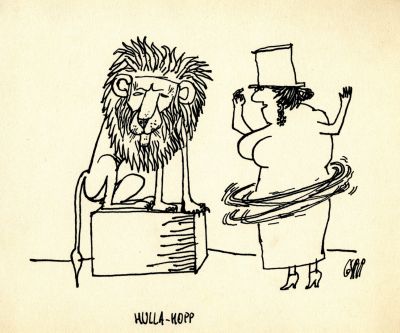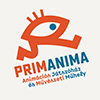
The book Lívusz Gyulai: A Caricaturist by Sándor Kertész (edited by Kati Gyulai) will also launch at the opening.
Opening: 29 May, Thursday 13:00
Katona József Library
Animated film director, graphic artist István Orosz will open the exhibition, moderates the discussion, and applauds the book.
Can be visited: 23 May, Wednesday – 3 June, Tuesday
Líviusz Gyulai was a Hungarian book illustrator, animated film director and graphic artist. He was awarded the Kossuth and Munkácsy Awards and was a Merited Artist, Master of Hungarian Motion Picture, Artist of the Nation, and a full member of the Hungarian Academy of Arts. An artist of unmatched cultural knowledge, he created countless unique graphic art and graphic art by printmaking and illustrated over seven hundred books with inimitable style. He also came up with the idea behind many animated shorts and series, as well as creating character designs for them, and directed them too.
On the occasion of receiving the Master of Hungarian Motion Picture title, István Antall praised the artist with the following words in April 2008: “Even his stills look animated, because there is only one Líviusz Gyulai—and how unique he is! His illustrations are made with the same aesthetics, views, spirit, and based on the same principles as his films. The dynamism of his engravings, etchings, and lithographs stems as much from the unfathomable richness, artistry, and texture of the medium as from the universal cultural history of humanity reinterpreted through them. Líviusz Gyulai knows no applied art, or knows only that, as speaking is the same for him as creating.”
Until the summer of 2023, about two hundred small caricatures were found in Líviusz Gyulai’s estate, mostly signed as “Gyivi”. It is the first time a selection of these early etchings by the versatile artist is presented to the public. Only a few of these were published in the first half of the sixties, in the weekly paper Ludas Matyi, among others. The artist was famous for not holding onto his doodles and sketches; he called them “studio waste” and disposed them without mercy. However, these unpublished works were somehow preserved for posterity. Thus another chapter is added to the incredibly rich oeuvre of the artist.
The artist once said of his satirical drawings: “Deforming reality highlights its essence.” So don’t let the disguise of levity fool you—it is often the deepest truth that lies behind it.














































